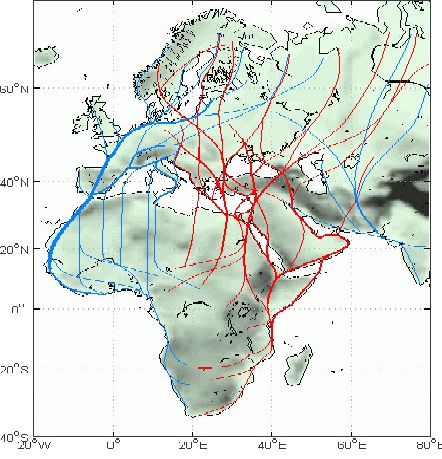Written by George Valiakos, DVM, MSc in Public Health and Environmental Hygiene.
During the last decade, West Nile virus (WNV) has emerged as one of the most highly-concerning zoonotic pathogens worldwide. In 2012 a total of 237 WNV cases were reported in the EU/EEA countries and 669 more in neighboring countries. In the USA, reported cases of WNV in humans has hit an all time high since 1999 when the virus was first introduced in the region. There were more than 260 cases of neuroinvasive disease confirmed in 2012. These statistics create major concerns about the future impact of WNV disease worldwide and how it may worsen through viral evolution, and changes in viral transmission and pathogenicity dynamics.
Avian species are considered the primary hosts of WNV, and in an endemic region, the virus is maintained in an enzootic cycle between mosquitoes and birds. The disease can manifest in humans and other mammals, with the main cause of contagion coming from the bite of infected mosquitoes. WNV was first isolated in Uganda (West Nile district) in 1937 from the blood of a native Ugandan woman, and up until the end of the 20th century, it was considered a cause of viral encephalitis limited only in the continents of Africa and Asia. The introduction of WNV in Europe and America has been mainly attributed to the migration routes of various avian species from Africa to these continents.
So far there are two major genetic lineages of WNV. Lineage 1 is the most widespread, containing isolates found in Western and Central Europe, North America, Asia, Africa and Australia. Strains of lineage 2 were mainly found in South Africa and Madagascar, but in the last decade they have been introduced to Central and Eastern Europe. It is interesting to examine the distribution of both lineages in relation to the migration routes of wild birds (Figure 1) as this helps us to understand how WNV is spread to affected countries.
Figure 1. Main migration flyways of wild birds in Europe. The Southeastern migration flyway in red. (Source: SEEN)
Our research team conducted a study investigating the impact of wild birds in relation to the current WNV disease outbreak in Greece (with more than 524 laboratory confirmed human cases and 60 human deaths). It was found that human exposure to sedentary birds could have occurred at least 8 months before the first human reports of WNV disease. This stresses the importance of a One Health approach in surveillance programs of zoonotic pathogens. If we could examine samples of animals and their origin, it could provide timely information regarding local circulation of otherwise neglected pathogens, and allow public health authorities the time to prepare and implement appropriate control measures.
Moreover, these facts show the importance of parallel research and surveillance for pathogens, like WNV, within countries and organizations of the developed and developing world. It is very difficult to come to a definite conclusion in regards to pathogen dispersion and evolution dynamics, when the data collected is sparse and limited to local research in EU countries. Yet the possible origin of the pathogen (i.e. a flavivirus) is from a developing country where information is limited, genetic monitoring is incomplete, conclusions regarding pathogen evolution are not solid.
The strengthening of research facilities and relevant knowledge transfer should be a top priority for developed countries in their plans to help countries of lower income that are in need. Public Health can be protected only through a universal cooperative approach regarding important emerging pathogens.
For more information on this study please read the paper,“Serological and molecular investigation into the role of wild birds in the epidemiology of West Nile virus in Greece.”
Latest posts by Nicola Gorsuch (see all)
- Home gardens for food security - 17th June 2013
- The extent of arsenic pollution in contaminated groundwater - 31st May 2013
- Mosquito survey identifies reservoir of disease - 10th May 2013

Comments